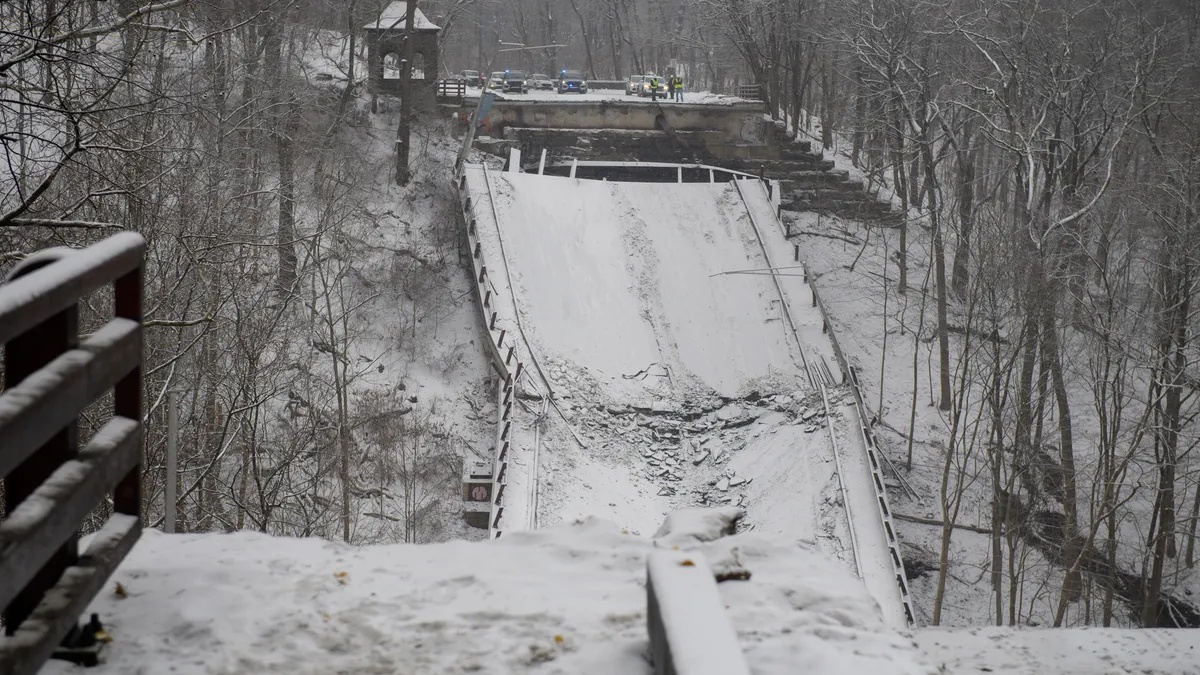Dive Brief:
- The structural issues that led to the January 2022 collapse of the Fern Hollow Bridge in Pittsburgh were the result of the city’s failure to respond to multiple red flags during inspections, according to a Feb. 21 National Transportation Safety Board press release.
- The NTSB, reiterating its May 2023 findings, found that the Pennsylvania Department of Transportation was aware of the structure’s issues, and didn’t perform regular maintenance to address those problems. However, the findings laid blame squarely at the feet of the city, whose failure to act on these recommendations, NTSB said in its report synopsis, led to the collapse.
- In addition, PennDOT contractors working on behalf of the city performed inspections that were not in compliance with published guidance from the Federal Highway Administration and American Association of State Highway and Transportation Officials. Because the span wasn’t properly evaluated, it remained open until it failed, officials said.
Dive Insight:
The span’s collapse — which occurred when the transverse tie plate on the southwest bridge leg failed due to extensive corrosion and section loss — resulted in the injuries of 10 motorists, four of whom were transported to the hospital. The depth of the damage in some sections was so severe, holes formed.
“If the City of Pittsburgh had taken appropriate action to repair or reinforce the section loss on the fracture-critical bridge leg components, the collapse of the Fern Hollow bridge could have been prevented,” the agency wrote in its synopsis.
Following its collapse, the bridge became a political stumping point, particularly for President Joe Biden, who visited multiple times and used it to tout the $1.2 trillion Infrastructure Investment and Jobs Act, which covered the $25.3 million repair. Biden was scheduled to visit Pittsburgh to deliver remarks in favor of the legislation the day it collapsed.
“The Fern Hollow bridge catastrophe must serve as a wake-up call that we cannot take our infrastructure for granted,” said Jennifer Homendy, NTSB chair, in the release. “Only through diligent attention to inspection, maintenance, and repair can we ensure the roads, bridges, and tunnels we all traverse every day are safe for the traveling public. Lives depend on it.”
It’s also not an isolated situation — spans across the country are in various states of disrepair. Chris Garrell, chief bridge engineer of the National Steel Bridge Alliance, told Construction Dive in July that maintenance was a root problem.
“This is like having a wound on your leg that you never seek any medical attention,” Garrell said. “Eventually it’s going to get bad, you’re going to lose the leg, and you’re going to fall down.”
Omaha, Nebraska-based HDR and New Kensington, Pennsylvania-based Swank Construction repaired the span, which reopened in December 2022.













